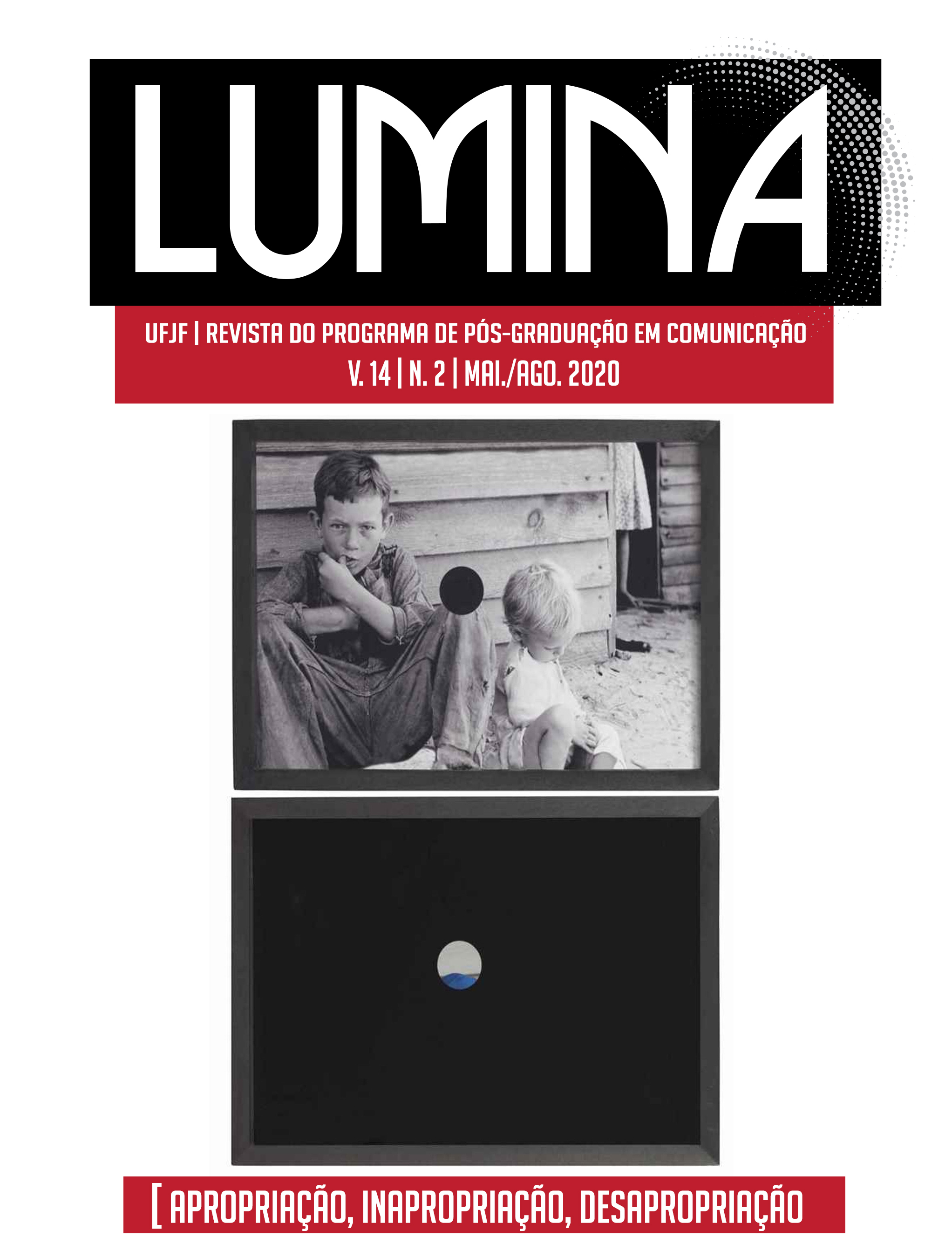Found footage e apropriação de imagens: uma análise de Faceless
DOI:
https://doi.org/10.34019/1981-4070.2020.v14.30102Keywords:
Found Footage, Arquivo, Banco de Dados, Apropriação, CinemaAbstract
In this article we intend to analyze the appropriation and reuse of archive images in found footage cinema, an aesthetic regime that has the characteristic of using pre-existing images as the basis for its realization. Our specific objective is to analyze the film Faceless (Austria, Dir. Manu Luksch, 2007, 50'). Part of a homonymous artistic project, the film is the result of the appropriation and assembly of images produced by CCTV cameras, closed circuit television, spread in the city of London, United Kingdom. The images were acquired under the terms of the UK Data Protection Act of 1998, which provides citizens with the right to access personal data stored on computers, including images recorded by CCTVs. The filmic narrative was developed in the process of obtaining the images, whose law imposes limits on the privacy of others in the event of their publication or reuse. According to the directives of the law, this can be done by obscuring the face of the other individuals present in the scene. Such conditions are assimilated by the scenario and by the filmic narrative, which dialogues critically with the contemporary system of increasing surveillance and visibility.
Downloads
References
DERRIDA, Jacques. Mal de arquivo: uma impressão freudiana. Rio de Janeiro: Relume-Dumará, 2001.
DANKS, Adrian. The Global Art of Found Footage Cinema. In: BADLEY, Linda, PALMER, R. Barton, SCHNEIDER, Steven Jay (eds.). Traditions in World Cinema. Edinburgh: Edinburgh University Press, 2006, p. 241 - 253.
FLUSSER, Vilém. Filosofia da Caixa Preta – Ensaios para uma futura filosofia da fotografia. São Paulo: Editora Hucitec, 1985.
GILLIOM, John; MONAHAN, Torin. SuperVision: An Introduction to the Surveillance Society. Chicago: University of Chicago Press, 2013.
HABIB, André. Ruin, Archive and the Time of Cinema: Peter Delpeut's "Lyrical Nitrate". SubStance, v.35, n.2. Madison: University of Wisconsin Press, 2006.
KAMPER, Dietmar. Mudança de Horizonte - O sol novo a cada dia. São Paulo: Paulus Editora, 2016.
MANOVICH, Lev. The language of new media. Cambridge: The Massachusetts Institute of Technology Press, 2001.
SÆTHER, Susanne Østby. Archival Art: Negotiating the Role of New Media. In RØSSAAK, Eivind (org.). The Archive in Motion: New Conceptions of the Archive in Contemporary Thought and New Media Practices. Oslo: National Library of Norway, 2010, p. 77 - 108.
WEES, William C. Recycled Images. The Art and Politics of Found Footage Films. Anthology Film Archives: New York City, 1993.
WEINRICHTER, Antonio. Metraje encontrado: la apropriación en el cine documental y experimental. Colección Punto de vista, Pamplona: Fondo de publicaciones del Gobierno de Navarra, n. 4, 2009.
WOLF, Sergio. El Manantial. Em: LISTORTI, Leandro e TRELOTOLA, Diego (org.) Cine Encontrado: Qué es y donde va el found footage? Gobierno de Buenos Aires. Libro que acompaña el “Foro found footage” del 12o BAFICI, Buenos Aires, 2010, p. 11 - 16.
Downloads
Published
How to Cite
Issue
Section
License
Autores que publicam nesta revista concordam com os seguintes termos:
- Autores mantém os direitos autorais e concedem à revista o direito de primeira publicação, com o trabalho simultaneamente licenciado sob a Licença Creative Commons Attribution que permite o compartilhamento do trabalho com reconhecimento da autoria e publicação inicial nesta revista.
- Autores têm autorização para assumir contratos adicionais separadamente, para distribuição não-exclusiva da versão do trabalho publicada nesta revista (ex.: publicar em repositório institucional ou como capítulo de livro), com reconhecimento de autoria e publicação inicial nesta revista.
- Autores têm permissão e são estimulados a publicar e distribuir seu trabalho online (ex.: em repositórios institucionais ou na sua página pessoal) a qualquer ponto antes ou durante o processo editorial, já que isso pode gerar alterações produtivas, bem como aumentar o impacto e a citação do trabalho publicado (Veja O Efeito do Acesso Livre).









